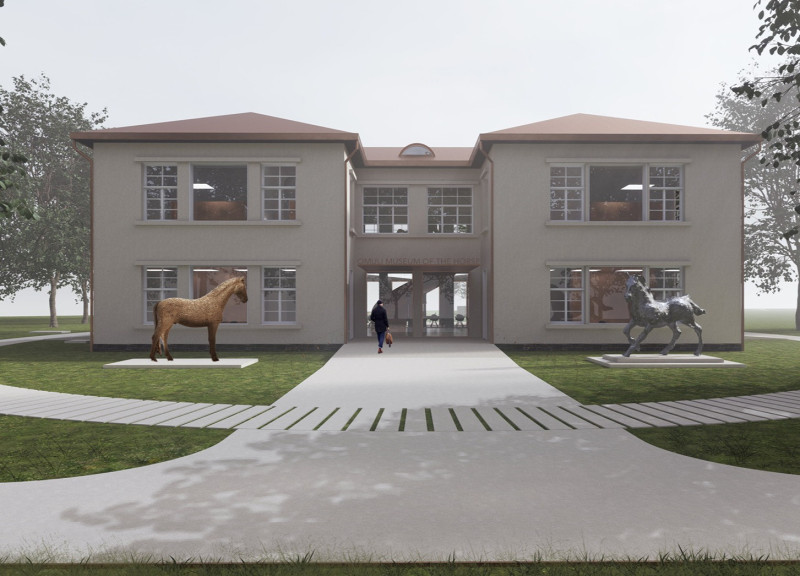5 key facts about this project
The Omul Museum of the Horse, located in Latvia, serves as a testament to the rich equestrian culture that permeates the region. The architecture integrates modern design principles with historical context, acting as a space dedicated to the preservation and exhibition of horse-related heritage. The museum is designed not only as a building to house artifacts but as an immersive environment that encourages visitor engagement with the subject matter.
Spatially, the museum is organized to promote a seamless flow between indoor and outdoor exhibits. The layout encourages exploration with its carefully planned pathways, leading visitors through various interactive spaces. The positioning of large windows and open areas enhances natural light, facilitating a connection with the surrounding landscape.
Innovative Material Use
The material selection within the project is key to its architectural identity. Concrete forms the primary structure, providing durability and a minimalist aesthetic. Wood accents are strategically applied in the flooring and ceiling, introducing warmth and a tactile quality that resonates with the natural environment. Glass features prominently in windows and display cases, ensuring transparency and fostering a sense of openness.
Metal elements are incorporated in structural frameworks and decorative features, linking modern construction techniques with traditional craftsmanship. This combination of materials allows the museum to create cohesive internal and external spaces that tell a story about its purpose.
Unique Design Approaches
The design of the Omul Museum of the Horse distinguishes itself through its commitment to interactivity and community engagement. Spaces are tailored not only for exhibitions but also for educational workshops and social events, enhancing the museum's role as a cultural hub. The inclusion of life-sized horse sculptures within both interior and exterior domains serves as immersive focal points that strengthen the thematic narrative.
The museum's environmental responsiveness is another notable aspect. By utilizing large glass surfaces and strategic shading, the design maximizes natural light while minimizing energy consumption. This approach demonstrates a commitment to sustainability, reflecting contemporary architectural ideals alongside the historical significance of the site.
In summary, the Omul Museum of the Horse is a thoughtful architectural venture that represents the cultural ethos of Latvia. It serves a multi-functional role, supporting educational and community activities while showcasing the region's equestrian history. For further insights into its architectural plans, sections, designs, and ideas, interested readers are encouraged to review the project presentation for a comprehensive understanding of this unique museum.


























